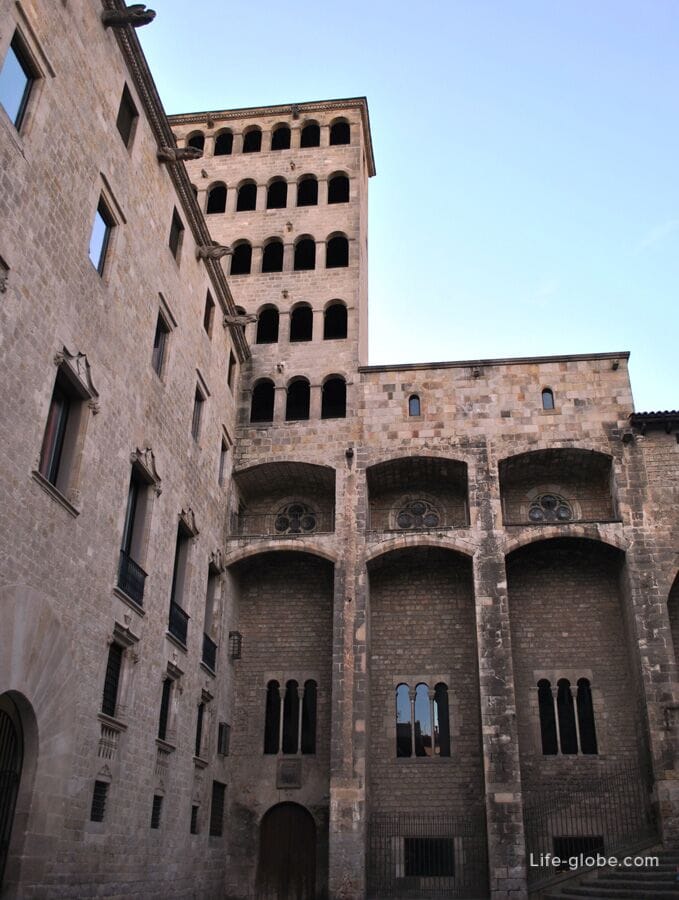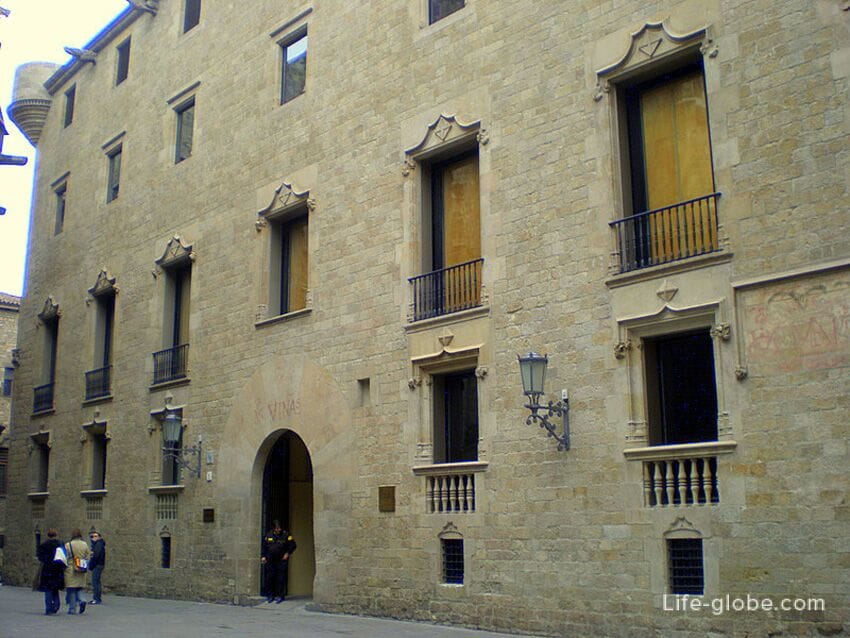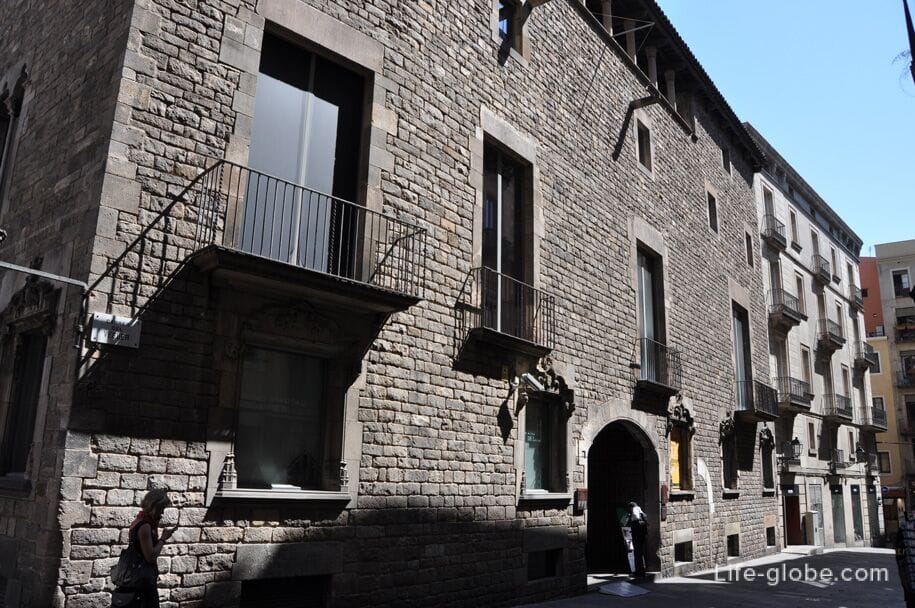
Plaza del Rei, means "square of the King" (Placa del Rei / Plaza del Rey), a monumental medieval square of the 14th century, surrounded by Gothic and Renaissance buildings and enclosed on all sides except the South-West corner.
Rey square in the historic center of Barcelona, in the Gothic quarter of the Old city.
The buildings around the square represent the architectural ensemble of the medieval era of Barcelona. And thanks to its almost closed structure and possible speakers, on the square traditionally hosts musical concerts and shows.
The main part of the square is its dominant - the Royal Palace (Palau Reial Major), erected in the Gothic style, the complex of historic buildings. This former residence of the counts of Barcelona and later kings of Aragon.
The large complex of the Royal Palace consists of three buildings and towers:
- Fat-del-Tinnell (Salo del Tinell) - Palace and main building of the complex, built by the king between 1359 and 1370 years, and was used as a main hall for meetings and receiving guests.
Gothic round arches Tinell located above the arches of the 11th century (built over a pre-existing monumental structure Dating to the Visigoth period).
Rose window located above is likely to be added later.
On the right side of the facade of the Palace is a staircase whose steps lead to the main entrance and are one of the oldest parts of the complex date back to the 11th century. A staircase leads to the Salo del Tinell (left) and the chapel of Santa Agata (right);

- the Palatine chapel of Santa Agata or St. Agatha (Capella de Santa Agueda), a facade which covers the area from the Eastern side, was built in 1302 as the Royal chapel.
In the structure of the chapel can be seen a high octagonal tower, Dating from the early 14th century, which culminates in a polygonal apse.
The chapel is set in the Roman wall and the sacristy, over which rises the tower, is actually inside one of the Roman defensive towers.
One of the later additions to the chapel is an altar dedicated to the virgin, 15th century;

- extreme left side of the main Palace stands the watch tower of king Martin (Mirador del Rei martí / Mirador del Rei Marti) located above the Salo del Tinell. This five-story tower is rectangular in plan 1555 with a series of arched window-openings. From the tower overlooking the medieval city.
The tower's name refers to Martin I called the Humane, the last of the Catalan counts of Barcelona, who died in 1410. So the tower Mirador, obviously, has nothing to do with him.
The truth is that this "medieval skyscraper" takes the place of the earlier tower, which gave the king Martin the sea.
However, the building that you see today was a watchtower used by the Spanish viceroys, in order to control the rebels of Barcelona;

- the Palace of the Governor or Palau del Lloctinent (Palau del Lloctinent), built in 1549-1557 in the style of late Gothic Renaissance, on the left side adjacent to the Salo del Tinell.
Initially the structure was intended as a Royal residence, but since it was the first correspondence of the kings, the building became home to the king's REP - Governor.
On the first floor of the Palace there is a nice patio with upper balcony.

On the Southeast side of the square the King is the home of Padillas (Casa Padellas), originally a private Palace, designed in the late Gothic style with Renaissance elements, viewed in the elements of doors and Windows.
The building was built around 1500 in Carrer Mercaders, but in 1931 it was transferred to Placa del Rei from the rebuild of the interior.
In 1943 in the walls of the Palace is the Headquarters of the Museum of history of Barcelona. In the bowels of the house Padillah historical excavations - the remains of a Roman fullonica.


A quarter of the Roman city of Barcino was discovered during archaeological excavations at plaça del Rei.
Visit the complex of the Royal Palace in Barcelona city historical Museum. Some temporary exhibitions.
If you go to the area of Sant Yiwu (Placa de Sant Iu), we can see part of the Romanesque facade of the Palace of Salò del Tinell. Previously, instead of the current square, it was the courtyard of the Royal Palace, but most of it was reconstructed in the early 20th century. The square can be accessed from the street Carrer dels Comtes. The square is also the entrance to the Frederic Mares Museum (Museu Frederic Mares).